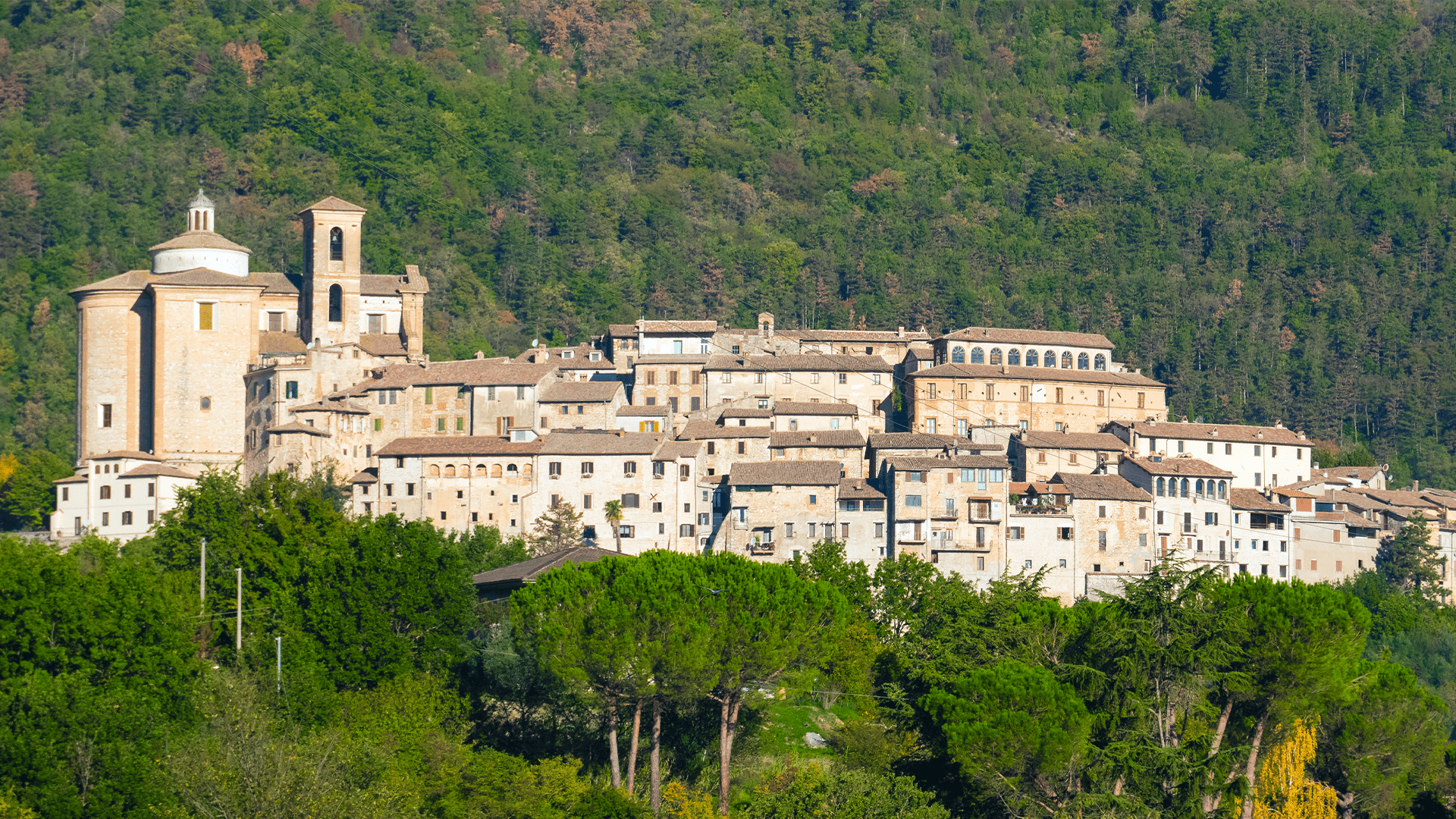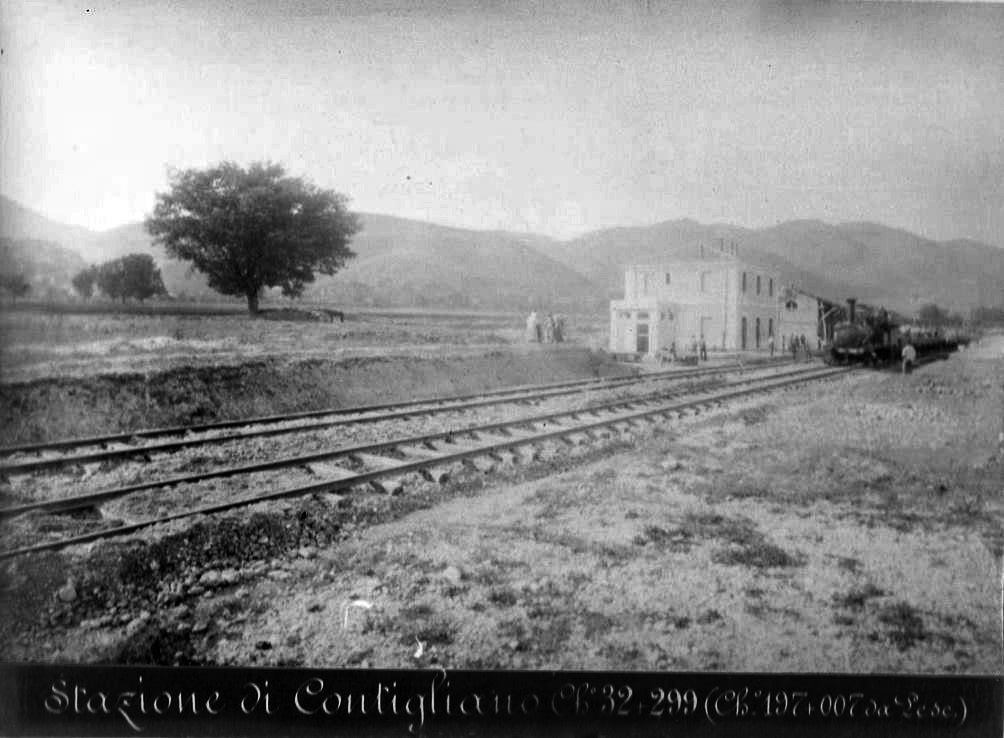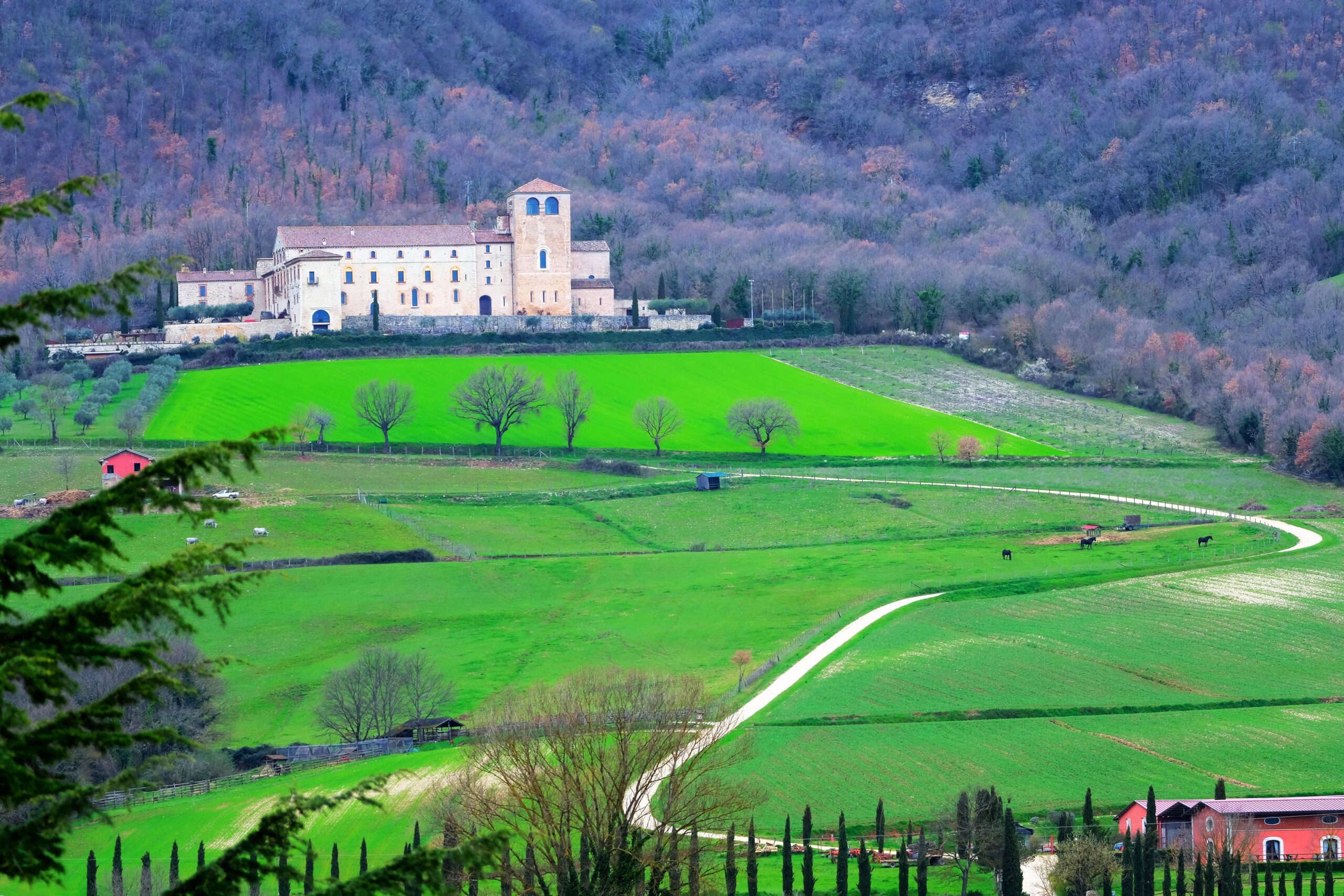




Contigliano
The station of Contigliano is located about 1.5 km at the foot of the village.
The railway crosses the municipal territory from the north, entering at Terria - near where the river Turano flows into the Velino - to the south, passing over the stream Canera, tributary of the Turano.
The station is sadly known for a train accident that occurred not far from it on 3 October 1936, which cost several people their lives, and involved most of the players of the L'Aquila football team: the event is commemorated there by a plaque.
Another plaque commemorates the inauguration of the railway in 1883, strongly desired and promoted by Contigliano politician Luigi Solidati Tiburzi, who obtained a deviation to the originally planned route to give his town a station.
The municipality of Contigliano is distributed between the Mounts Sabini, to the west, with peaks that exceed 1,200 metres, and the Rieti plain; part of the flat territory is included in the Partial Nature Reserve of the Lakes Lungo and Ripasottile, established in 1979, of great importance especially for birdlife, which finds excellent refuges during migration in the humid environments of the plain.
The historic centre of Contigliano is located on an offshoot of the Sabine mountains, on the south-western edge of the Rieti valley. From the hilltop, the town dominates the end of the Valle Cupa, which opens up between the mountains in the direction of Cottanello and is crossed by the provincial road of Fontecerro.
The village retains its ancient medieval layout, surrounded by walls and dominated by the majestic bulk of the church (formerly collegiate) of St Michael Archangel, built between the 17th and 18th centuries and rich in works of art.
On the border with the municipality of Greccio, at the foot of the mountain, an imposing structure can be seen: the former Cistercian Abbey of St. Pastore, which played a fundamental role between the 13th and 15th centuries: recovered after a long period of neglect, it is now used as a venue for conferences and receptions.
On the Canera Valley stand two ancient, small villages, now hamlets of this municipality: the one further upstream is San Filippo, with a very compact, typically medieval structure; further downstream is Collebaccaro, which also overlooks the Rieti basin.
Near the latter village is the Villa that once belonged to the great baritone Mattia Battistini (+1928), which today houses a branch of the 'Giulio Briccialdi' State Music Conservatory of Terni.

Project by Riattivati Youth Cultural Association
With contributions from: FAI – Fondo per l’Ambiente Italiano ETS, INTESA SANPAOLO, Rotary Club Rieti
Thanks To the promotion comittee: Amici di Rieti, Associazione Culturale Giovanile Riattivati, Rotary Club Rieti e Associazione Collezionisti “Sabatino Fabi”
